Ever since the sushi fad first touched down in Canada, we have been avid consumers. Starting hesitantly, as most did, with California Rolls and eventually working our way up to plates full of Sashimi, sushi has become a staple of our diet and has become the same for millions of people across North America.
Being avid anglers, however, eating this much fish caught by other people seemed somewhat wrong. Lake caught walleye and pike had always been more enticing to us than haddock or cod and our choice of salmon has always favoured lake-bound Kokannee over farmed Atlantics.
So, to combine our favourite hobby with one of our favourites foods, we decided to give our favourite freshwater quarry the full sushi treatment – taking a freshly caught walleye from a pristine northern Ontario lake, filleting it on the front of the boat, and eating walleye sashimi right on the water as we fished.
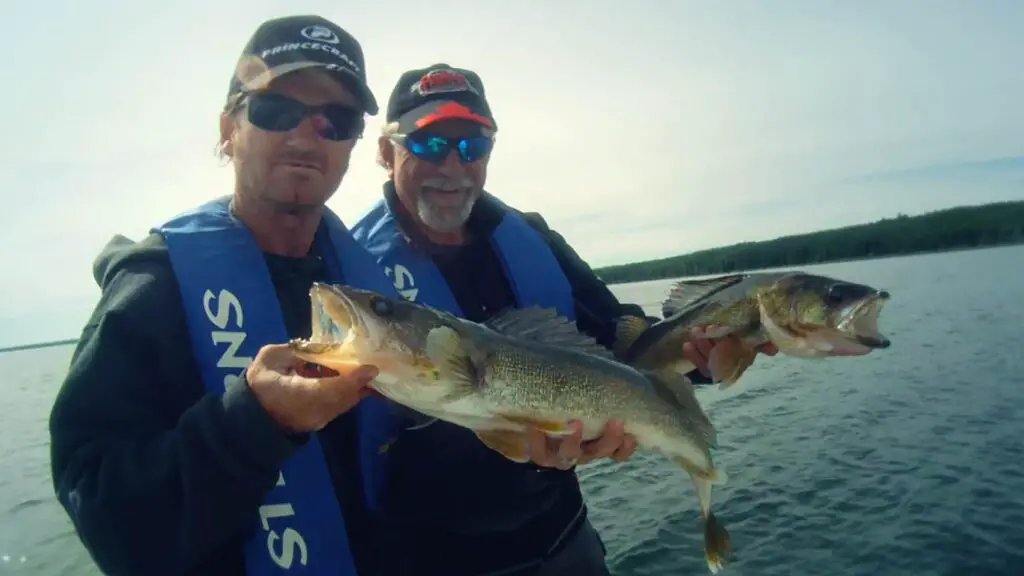
All was perfect in the world of Fish’n Canada… that was until we told a local biologist about our experiment.
After a full lecture about metre-long worms, small yellow grubs, and other parasites, we were just happy to have made it home alive.
Fast-forward 20 years, the fear instilled in us by that biologist has all but worn out and we are ready to tackle the subject once more and, with a little help from our friends, answer the question of “can you eat freshwater fish raw?” once and for all.
The Doc’s Perspective
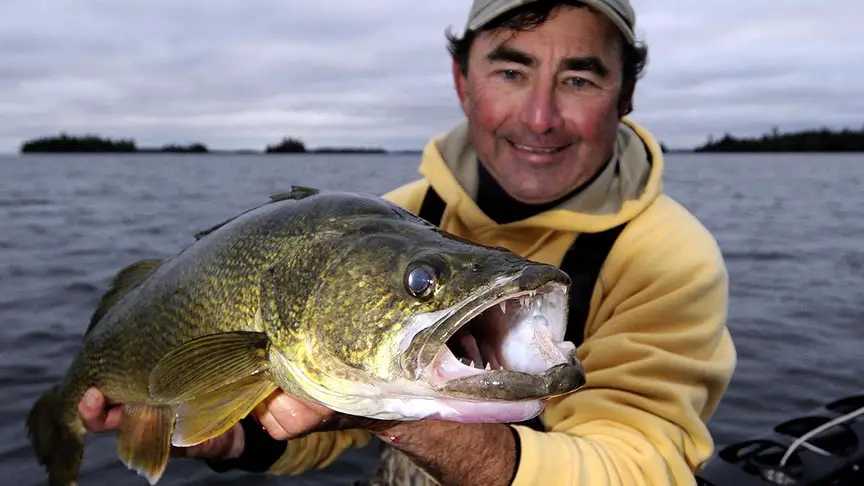
Gord Pyzer is known as “the Doc” not just because he has put doctorate-level hours into fishing, but because he has over 30 years of experience as a senior manager with Ontario’s Ministry of Natural Resources.
This made him the perfect man to run our raw fish questions by as he would know exactly what kind of potential parasites our favourite fish were holding and what kind of damage they would do if they were consumed by humans.
What kind of parasites do freshwater fish carry?
Yellow Grub

Yellow Grubs are perhaps the most common parasite we see in our fresh water fish, often found nestled into the tails and flesh of panfish such as Perch and Bluegill. These unsightly grubs (actually parasitic flukes) make their way into the water via fish-eating birds, where they then mature inside aquatic snails before venturing out in their mature form to find their host fish.
Thankfully, these grubs are harmless to humans and, even if eaten live and raw, would only add a bit more protein to your diet.
Black Grub
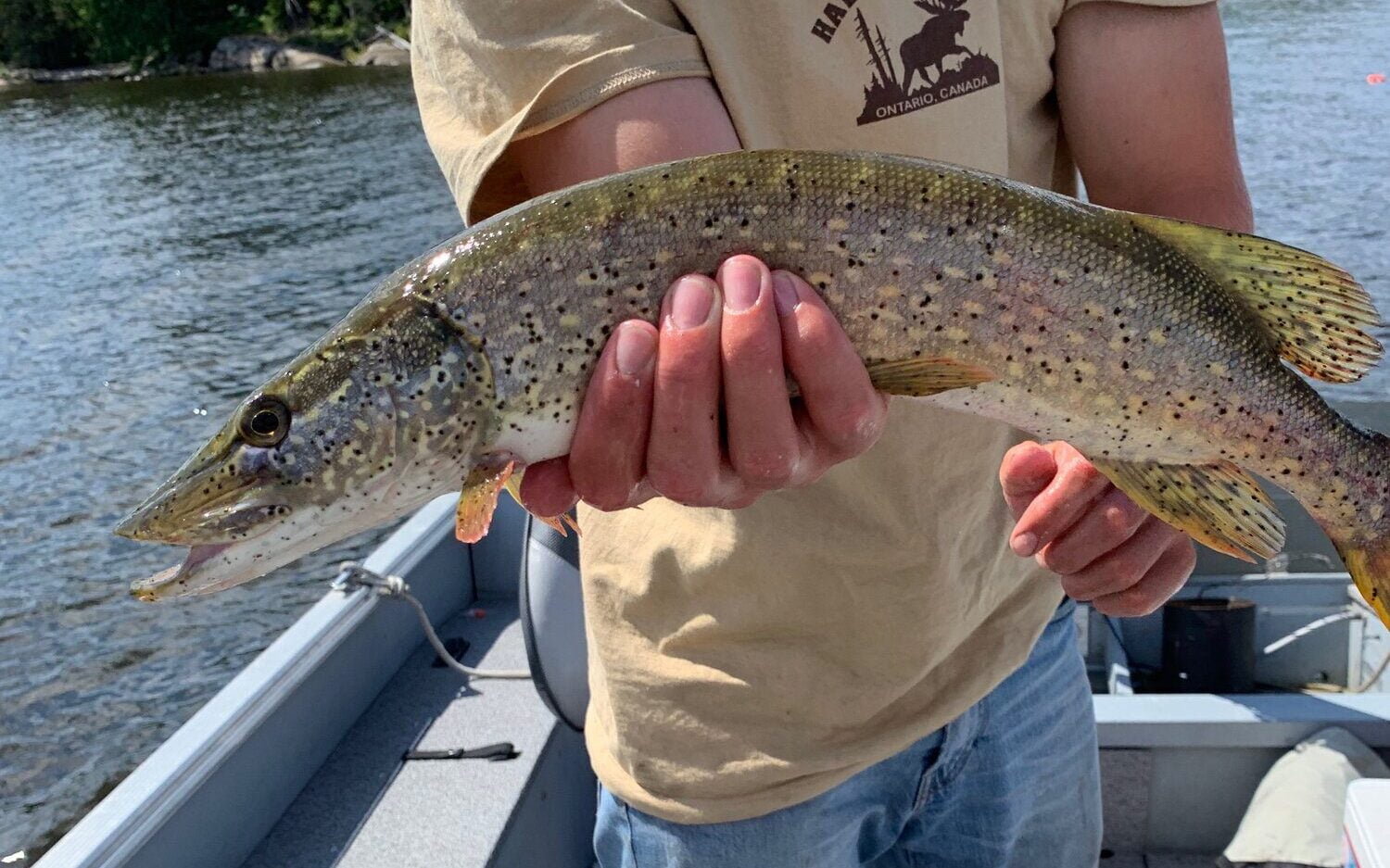
Black Grubs, more commonly called Black Spots, are very similar to Yellow Grubs in every way except the markings they leave on the fish.
Like the Yellow Grubs, these parasitic flukes enter the water through fish-eating birds, mature inside of snails, and then find their target fish.
Once the worm enters its final host, the fish responds by forming a hard cyst made from a black pigment to trap the worm, creating small black spots throughout the fish’s body and temporarily pausing the spread of the parasite. These cysts remain closed until the fish is eaten, typically by birds, where the cycle starts over again.
Thankfully (again), this parasite is not transmittable to humans but will add a bit of crunch to your fillets if they are not picked out.
Broad Fish Tapeworm
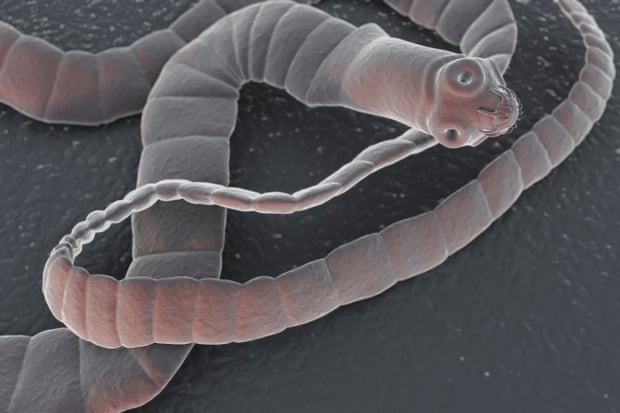
If you found the last two parasites gross, you may want to stop reading.
Known formally as Diphyllobothrium latum, the broad fish tapeworm is the largest tapeworm that can infect humans and is present in many of our freshwater fish. “Large”, in fact, may be a bit of an understatement as these behemoths have been measured in humans at over 30 feet in length.
In our recent podcast episode, Gord gets into a story about a friend of his experiencing this first hand after consuming some undercooked Lake Trout.
Since these parasites like cold water, Lake Trout are one of the more frequent hosts of these worms, however, they are also very prominent in Whitefish, Northern Pike, Walleye, and Smallmouth Bass.
Fortunately, for those cooking their fish, these worms will not survive the frying, baking, or smoking process and, if you have eaten a lot of trout, you have likely consumed them without noticing. For us sushi eaters, however, contracting these worms is a real possibility.
Gord’s Reccomendation:
Gord says that the decision to eat raw fish ultimately comes down to your perception of risk vs. reward. As he says in the podcast, “is eating that piece of raw fish really worth a 25-foot tapeworm?”
From Gord’s perspective, the answer to this question is obvious and he would much rather fry up his fresh-caught walleye than take the chance and consume it raw. As Gord says, “there are no medals for self-inflicted wounds.”
The Chef’s Perspective


After getting scared to death by Gord’s tapeworm stories, we wanted a more positive take on eating raw freshwater fish.
Chef Antonio Meleca is not only a chef to the stars and host of Fish’n Canada’s Fish du Jour series on YouTube, but is also an avid angler who frequently consumes his catches raw
In fact, Antonio has blended his hobby and his work on several occasions, including once with Kit Harington of Game of Thrones fame, where he prepared Smallmouth sushi and sashimi, caught by the actor right on the shores of Lake Nipissing (listen here).
So how did Kit and Antonio survive the process tapeworm-free?
How do you prepare freshwater sushi?
Antonio says that anytime he prepares freshwater sushi, he uses the same process he would for tuna or salmon. This starts with the gutting process, which should start as soon as possible after the fish is caught. When filleting, Antonio says he is then always keeping a close eye on the flesh for grubs or worms. In most of our non-bottom-dwelling freshwater fish, these parasites are not microscopic and can be easily spotted or felt.
Next, the fish has to be frozen for at least 48 hours below -18 C. In the sushi world, this is called IQF (Individually Quick Frozen) and is the time and temperature necessary to kill any harmful parasite that could be living in the meat. Unfortunately, most household freezers cannot reach these temperatures so some local connections to those with commercial-grade freezers may have to be made.
After the freezing process has been completed, the fish can be prepared any way you like. On the day with Kit Harington, sashimi and ceviche were the preference. However, Antonio has also used raw Smallmouth and Walleye for rolls which are sweetened with brown sugar and soya sauce.
Antonio’s Reccomendation:
Antonio says that freezing fish at the IQF standard -18C for two days makes it perfectly safe for consumption and, when done correctly, can make excellent tasting sushi of your favourite freshwater fish. Antonio does emphasize, however, that household freezers DO NOT reach these temperatures and, as a disclaimer, he cannot recommend making sushi at home without the proper equipment.
The Food Safety Perspective

To break the tie, we wanted to interview someone who could give us the food safety perspective of eating freshwater fish raw.
That man was Ken Cashin, a food safety consultant at Innovative Quality Solutions on Prince Edward Island.
In our interview with Ken, he echoed much of what both Gord and Antonio had said by stating that when eating any raw food, whether it be trout, salmon, beef or oysters, there is always a risk.
However, some fish provide a far greater risk than others. With oysters, for example, which act in the ocean as filters for known toxins, people rarely think twice about consuming them raw despite the massive health risks that can result from improper handling.
With something like a raw freshwater trout or walleye, on the other hand, the risks of serious illness are far lower yet many people wouldn’t dream of consuming it raw.
Ken’s Reccomendation
Like Gord, Ken says eating raw fish is all about weighing risks and deciding how much you really want that sushi. Like Antonio, Ken also reiterates that all risks can be avoided through proper handling and freezing. “The process is simple,” said Ken, “freeze the product, kill the worm.”
The Verdict
So can you eat freshwater fish raw?
The quick answer is yes.. with a caveat.
As both Antonio and Ken pointed out, the parasites found in our freshwater fish cannot survive the IQF freezing process carried out on traditional sushi, meaning all you have to do to make your fish safe to eat raw is to freeze it at -18 C for at least two days.
This, however, is much easier said than done as most household freezers cannot reach these temperatures.
For those looking to skip this process, the decision to eat raw freshwater fish ultimately comes down to your own calculation of risk vs. reward and whether you think your eyes are keen enough to spot the tapeworms that are patiently waiting to grow to record sizes in their next host.
Let us know in the comments below whether freshwater sushi will be added to your next shore lunch menu.
For the full interviews with all three of our guests, check out the podcast on Apple Podcast, Spotify, Google Play, or wherever else you get your podcasts.





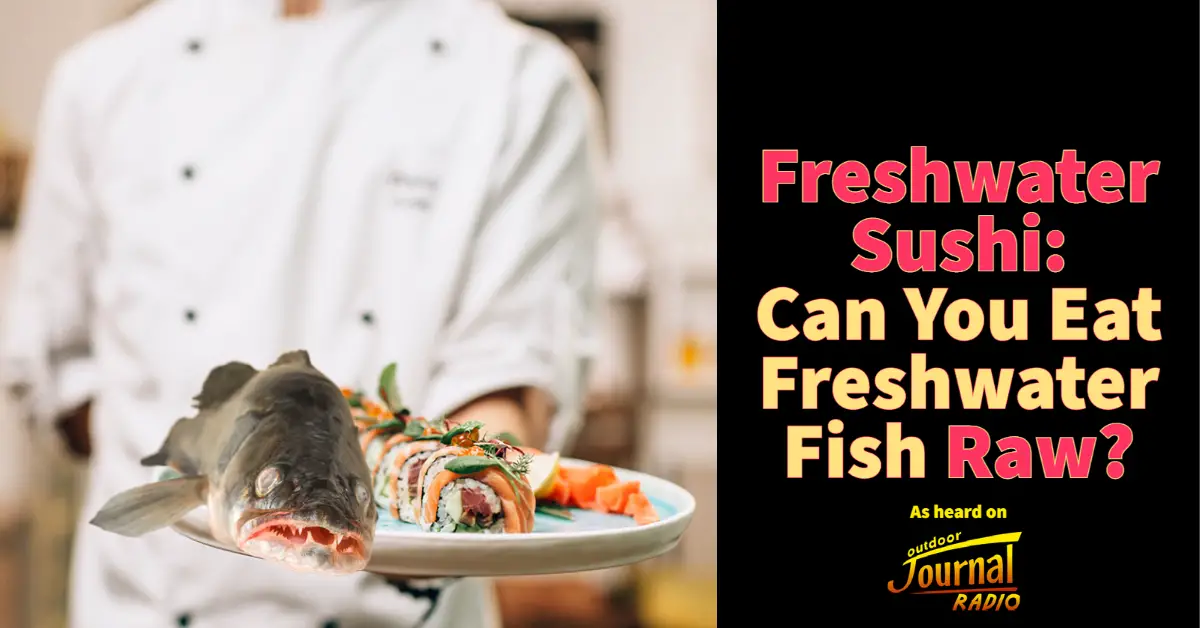

7 Responses
I have never eaten raw meat. I am not surprised to hear Gord Pyzer’s eloquent statement on the Outdoor Journal Radio Podcast concerning the nasties that coexist in fresh water fishes, some of which I have personally witnessed, I will give Sushi a pass. My personal opinion, consuming raw meat has far to many health risks, but to each his own.
I would love to try this at home, my freezer has a “fast freeze” option that goes to -22C.
Is there a study that references the -18C for 48 hours mentioned in the article? From what I have read elsewhere online 7 days at -20C is recommended
Hi Drew, thanks for the question! We passed it along to our sushi expert Antonio Meleca. This is what he had to say: “I would definitely recommend the 7 days. I have served it after 48hrs and had no issues. I can’t guarantee anything only I could share my own experience with doing it. But definitely waiting the 7 days at -20 is the proper way”
Thank you for the clarification Dean!
love sushi but think i will pass on the tapeworm opportunity
My freezer can reach temps well below 0 Fahrenheit when dial is well less than 3/4 to coolest temp… to say that most freezers can’t reach this is confusing…
Trout Sashimi here we come!